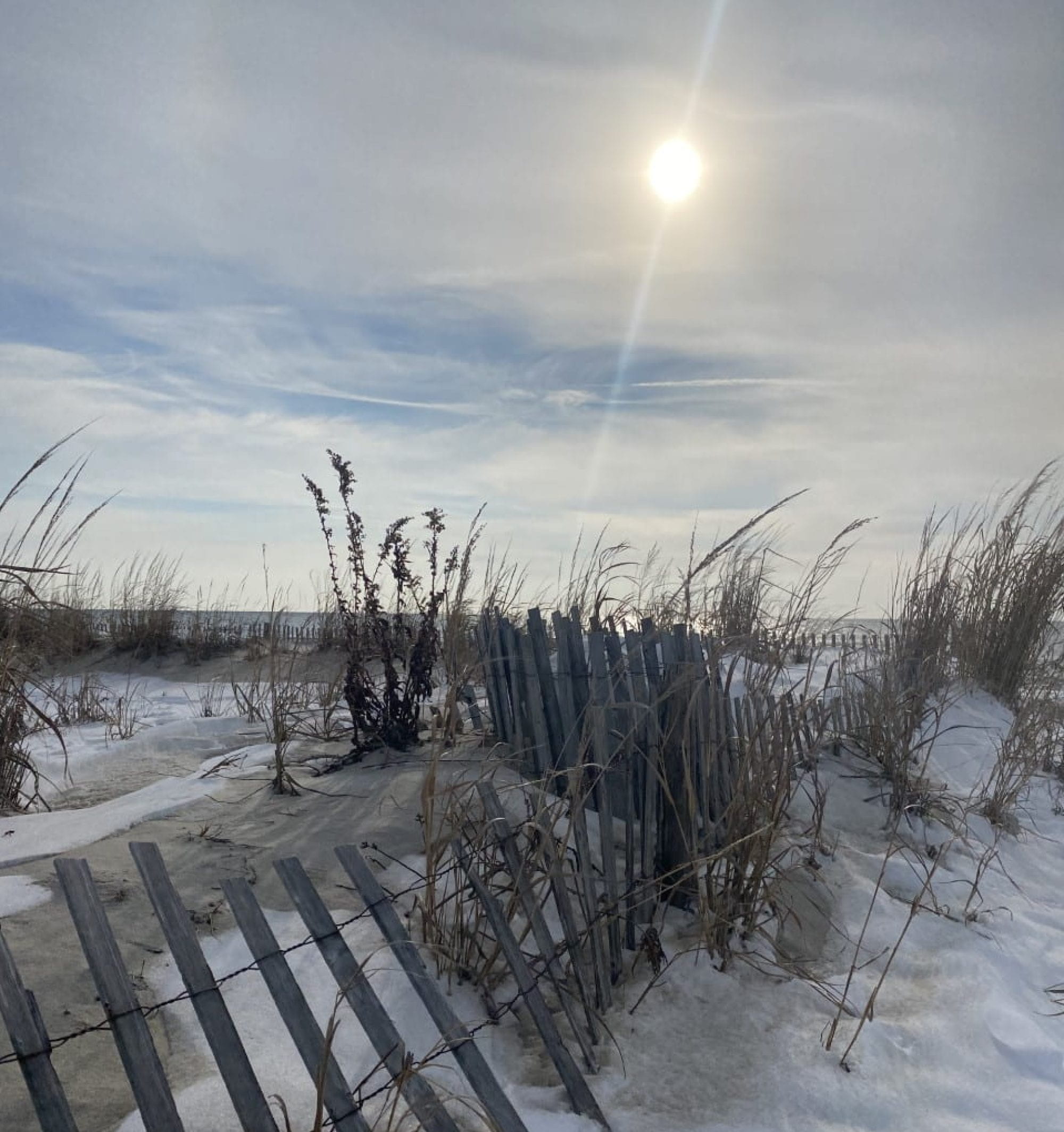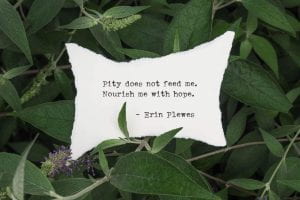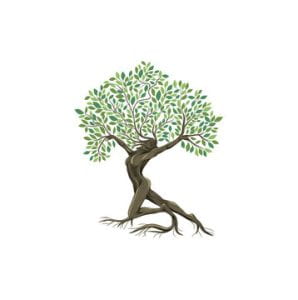When I was in 8th grade I was in a musical about the Greek Gods and Pandora’s box. The part I secured was that of the character “Hope”. I had only one scene at the very end. I (Hope) came out of Pandora’s box. I sang a song, and I can still remember the words. At 14 years old I remember it being difficult for me to get through it without getting emotional. These are some of the words:
“Hope is forever, trust is forever.
And then you can never go wrong.
Hope is the one bright thin ray of sunshine, the lifeline that keeps you warm.”
“The lifeline that keeps you warm….”
A common theme throughout the ecofeminist essays, journals, and other resources I have reviewed regarding activism is the idea that “where there is hope – there are possibilities.” (That is also my Twitter profile quote and has been since I can remember.) I think hope means different things to different people, but in essence what most people agree upon is that hope is an idea. It is the possibility that an idea can bring something: usually change.
There are many connections that can be made between the shared oppression that women and nature share. Within certain circumstances, it is an almost circular or reciprocal relationship. When we look at communities where trees are felled, such as in Africa and India, it depletes the communities of so much. The kindling needed to heat their homes and cook their food, the shade provided, the natural protection that the trees secure is all stripped from them. The degradation of their natural surroundings is not only an assault to the tree itself, but to the ecosystem in which people inhabit. Both are continually victims of patriarchy.
Neither the trees nor women are given the consideration as a priority over economic profit. Those that prosper will continue to at the expense of so many women and nonhumans beings. So much life is cut short, hurt, sickened, and disqualified. As the forests are stripped of its trees, the communities are stripped of kindling to heat their homes and cook their food. The women see the devastation first because they live it. They do much of the farming so they are the first to see changes or threats to their harvest. They are the ones that fetch the water, so they are aware of how far they must go and how tainted the water is. They breast feed their babies and understand the danger that comes with passing chemicals and other contaminants from their own bodies to that of their children.
Women are the voices of the trees and the water because they know and respect the fact that they cannot live without either. None of us can. So they fight and become the voices of the trees like Wangari Maathai who founded the Green Belt Movement on Earth Day in 1977 (Maathai, 1). She was fighting this fight over fifty years ago in Africa. She was a woman who took action over and over again. She was both revered and denounced by her own government. In one moment, they praised her work distributing seedlings which culminated in the planting of millions of trees, only to be punished later for protesting a skyscraper that the President wanted to erect in a public park. Much like the trees that were hacked, the soil that was eroded, the resources that were depleted, Wangari was beaten and harassed and threatened not just as an activist but as a woman.
Wangari’s connectedness to nature was in part, through their shared oppression. Her for being a woman and the environment because its place (much like women) will always be second to that of the wants and needs of patriarchal society. She returned to nature its original offerings by organizing a movement to plant trees. It was a very full circle movement.
The Chipko movement is a very similar story but goes back to the 18th century when over 80 communities gathered forces to protest the King who permitted the felling of trees. Fast forward to the 1970’s and the Chipko movement was again ignited into action against the government that had planned to grant a section of forest to a sporting goods company. Women hugged the trees and would not leave and as a result, prevented thousands of trees from being destroyed.
These movements happened because women took a stand. They fought back against the situation that they found themselves in. Wangari would say that if you’re on the wrong bus – you need to take action and get out. Women recognize that while they may not have been given the proper information, training, education, resources, etc. it is up to them to inform themselves (Maathai, 3). There is a deep connection here that many women feel. A connectedness to that which provides for them, protects them, and nourishes them. Women recognize that to stay in the situation as it is means that nothing will change. Things will only get worse. Rather than blame the powers that be and rest on helplessness, they “speak truth to power” and in doing so empower themselves to create the change.
Women and nature share an oppression based on a lack of value. “Values have to do with the respect of each person – woman and man, each group, each culture, each ecosystem” (Gebara, 98). Gebara asks the question in terms of one’s religious theology, “What value is present in this or that theological tradition? How can it help us towards more justice and solidarity?” (Gebara, 98). I ask this question – What value is present in this or that societal ideology? What value is present in this or that governmental structures, procedures, and policies? What value is present in this or that corporate capitalist nomenclature? What do THEY value? How does one find value in a world that doesn’t value them?
When we evaluate situations such as Standing Rock where indigenous people fight against the mining/drilling of their land that brings upon them not only displacement but violence, we are reminded of that system of hierarchy once again. Who and what is valued more than something else? In a video about gendered impact and violence against the land, Gloria Chicaiza said “we speak for the birds, animals, fish , and other life forms”, it is a part of who they are. When they are stripped of these things, or when they witness the degradation of nature, they “feel it in their mind, bodies, and souls” because they are connected to it. They are one.
Beyond the scope of the material deficits, cultural losses, ecological destruction, is something vital. The loss of purpose and acknowledgement. The feeling of desperation, despair, isolation, nothingness, and neglect. In such circumstances people have cards stacked against them that they didn’t even play. The choice was never theirs. If it was, do you think that women would choose to allow their children to swim in garbage pools in Brazil to look for cans as a source of income? That is not a choice. That is desperation. The child may know nothing more, however that is only because they were never afforded possibilities. This type of degradation and disempowerment is an assault to a person’s sense of being and creates feelings of shame. Scholar, writer, and artist Leanne Betasamosake Simpson said, “I am not murdered, I am not missing, but parts of me have been disappeared and I remain a target, because I was a Native woman” (Simpson, 92). In that moment we can see the clear correlation between a woman who has had parts of her depleted or remain hidden as a result of oppression, much like a forest hast lost its trees. As people get worn down, they can lose part of who they are. They can separate from parts of their identity.
This is where hope comes in. Ivone Gebara said, “Without hope there is not life” and she was right (Gebara 101). It starts with an idea. In Africa it started with a seedling. That seedling was not just a seedling. It was far more than that. It represented an idea that could lead to change. It was a possibility. From there women took charge planting millions of trees. Initially they did not think such things were possible without education and technology, but they persevered. They were saving the forest and in turn the forest was saving them.
“When we plant trees, we plant the seeds of peace & hope.”
~Wangari Maathai ~
Check out this website called “The New Humanitarian” and read about Sheila Watt-Cloutier and her activism in Canada and about the John family and how the Yup’ik have been evicted from their land as a result of climate change.
It is worth the read!



Teresa,
I genuinely appreciated your optimistic, encouraging, empowering, and, yes, hopeful take on activism.
After reading your post, I realized how frustrated, angry, and hopeless my writing felt in comparison.
And when we are all being oppressed by a hate-fueled, competitive institution, what good is more anger going to do? Nothing.
We need your optimism, your hopeful outlook to rally behind. So we can all band together and create actionable change.
“Women are the voices of the trees and the water” is such a powerful line, and you’re absolutely right. We, as women, need to use our voices to speak for the environment because we recognize the mirrored intrinsic value within all beings, even when ours is consistently stifled.
Maathai expressed an idea in her writing that I think is relevant here. She wrote, “Trees are alive, so we react to them in very different ways. Quite often, we [women] get attached to a tree, because it gives us food and fodder for our fires. It is such a friendly thing. When you plant a tree and you see it grow, something happens to you. You want to protect it, and you value it…The men see trees as an economic investment. They look thirty years into the future and see that they will have huge trees to sell.“
This evidences how women see life in other beings. Again, we recognize that mirrored intrinsic value of a living being, whether that be a tree, a plant, a nonhuman animal, or the Earth herself. Whereas men see dollar signs and power. They spend their energy trying to prove or establish inanimacy and inferiority as a means to justify their logic of domination.
Jasmine –
Trust me when I tell you that I have my moments too. I can be VERY passionate and even enraged at times. But I think what keeps hope alive for me is the thought process that there are always ideas and thus possibilities.
I want a better future for all of us and I think that the only way we can achieve this by staying focused and level headed. We need to stay in the “now” and be truly present. Our history is vital to our current situation ad it is imperative we know it, but in order to affect change for our future, we must apply what we know and learn from the mistakes of the past so that we do not become the past again. It certainly feels like we are going backwards these days. I feel that to my core. I do. There will always be those that continue to feed cycles of greed and hate and try to pull society back – but I refuse to become hateful and to engage and to give them my power.
I look where I can for those of us (like you) that see the truth. We have the potential to do better. Find the good where you can and build from there.
🙂
T
Teresa, I have put through my comments a few times. I am not sure why I do not see it show up. Perhaps you need to approve it?
Thanks! Catherine Gurspan
Catherine –
I see your post on my blog! 🙂 I will read it today or tomorrow. You are all good!
Teresa
Teresa,
I am trying one more time to see if my post will come through. I was emotionally overwhelmed by your youtube post from Leanne Betasamosake Simpson“.
Simpson’s activism is rooted in a resistance to extractivism, which refers to both the material extraction of natural resources from the Earth as well as the cognitive extraction of Indigenous ideas, i.e., cultural appropriation. Simpson critiques environmental reforms that operate from extractivist philosophies and explains that the solutions to impending environmental collapse cannot be based in extractivist methodologies. She specifically critiques the ways in which government and corporate environmental reforms extract pieces of indigenous knowledge in the search for sustainable solutions while lacking a related cultural context and that their efforts only serve to reinforce extractivist methodologies. Ultimately, Simpson situates her critique of extractive capitalism within the larger framework of colonialism.
A strong proponent of Indigenous resurgence, Simpson suggests an alternative ideology focused on rebuilding Indigenous nationhood using Indigenous intelligence and local engagement with land and community. Simpson’s philosophy is grounded in an indigenous perspective and is focused not on a return to the past, but on bringing traditional ways of living into a collective future. She articulates the potentiality of a collective future as one necessarily built absent the exploitation of the earth and absent the ongoing acts of aggression all minorities. Recognition for us is about presence, about profound listening, and about recognizing and affirming the light in each other as a mechanism for nurturing and strengthening internal relationships to our Nishnaabeg worlds. It is a core part of our political systems because they are rooted in our bodies and our bodies are not just informed by but created and maintained by relationships of deep reciprocity.
Cathy –
I am so glad you enjoyed the video. I too was very moved by it. I love Simpson’s perspective with activism and her use of artistry as well.
Teresa
Teresa,
On thing that really struck me about the readings this week is how much violence is associated with the rise in environmental projects. Reading about the women in Africa, and seeing how they have been abused and mutilated because they spoke up about not just their rights as women, but for wanting to better their land…it baffles me. Another thing that really struck me is the lack of media coverage for Indigenous people as they fight for their land. There are many different projects either already happening or getting ready to begin that will continue to take over their land and will continue to bring nothing but violence. A few weeks ago I spoke about The Willow Project and I highly recommend you check it out, if not my post then go to google. There is so much information about the negative effects.
Here’s a link to learn more about the destruction that’s been caused towards Indigenous people’s lives. Included on the site are statistics about the amount of women and children that have gone missing, been murdered, or have suffered abuse.
https://pages.nativehope.com/native-americans-today?__hstc=88825988.ea8e9500d39afae8eb83389ad61b5584.1680530653815.1680530653815.1680530653815.1&__hssc=88825988.2.1680530653815&__hsfp=3000179024
Hi Teresa! I so appreciate your hopeful outlook. I am glad I am not alone in this. Sometimes I find myself feeling naively optimistic. I loved your childhood performance,,, “hope is forever, trust is forever”. I believe this to be so true of activism. Activism is such a mentally draining thing to do because, as I read in my WGS 300 class last week, it requires us to be in difficult situations where we will have to examine ourselves rather than only examine the environment around us. And I do not think that this comes without trust. In order to be able to be effective in activism we have to be trusting of ourselves so that these difficult conversations and situations can be had and handled effectively and to make strides in social justice. I also think about your quote in regards to what activism actually is. It is the hope that things can get better and in order to have hope we have to trust that with the work things can get better. Activism is not successful on blind hope, it has to be combined with the trust that the activists has in themself to never give up the fight.